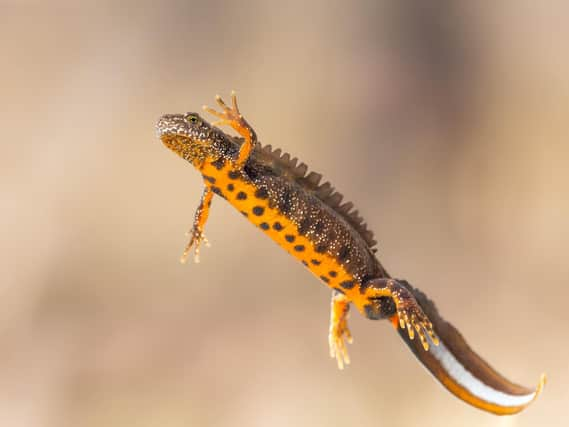New wildlife corridor in Sheffield is already protecting endangered species


The project, developed by wildlife conservation charity Froglife and the Sheffield City Council Ecology Team has created a corridor which runs from Woodhouse Washlands to Holbrook Marsh and Heath outside the city.
And although only in its early stages, Sheffield Council Biodiversity Officer, Angus Hunter pronounced it “a resounding success” with endangered Great Crested Newts and Willow Tits spotted along the route.
Advertisement
Hide AdAdvertisement
Hide AdThe project which started in 2018 has created 43 breeding ponds along with numerous wildlife scrapes, hibernation spaces for reptiles and amphibians as well as providing foraging habitats and breeding areas for Willow Tits and Harvest Mice.
While providing a safe haven for wildlife it has also linked in businesses and encouraged collaborative partnerships between conservation bodies, land-owners and charities.
The finishing touches to the project was the planting of 5,000 young tree whips, provided by the Environment Agency. The aim was to ensure Great Crested Newts and Harvest Mice were able to travel along the wetland corridor using the trees, shrubs and hedgerows they need for cover.
Many of the trees were planted by school children and they included 25 of the UK’s rarest hardwood species trees such as the Black Poplar, Silver Birch, Elder, Hawthorn, Hazel, Blackthorn, Grey Willow and Alder Buckthorn.
Advertisement
Hide AdAdvertisement
Hide AdNumerous Willow Tit nest boxes were put up and areas of Philaris grass were planted to encourage Harvest Mouse nesting.
Mr Hunter said Great Crested Newts had been recorded breeding in many of the new ponds as well as the critically endangered Willow Tit being confirmed as establishing at least one territory within the project area for the first time.
“Further Surveys for Harvest Mice will be carried out over the summer to see if they are moving into the landscape scale wildlife corridor that is benefitting a huge number of other species including grass snake, frogs and toads.”
James McAdie, Operations Manager for Froglife said: “Good quality aquatic ecosystems are intrinsically biodiverse and the creation of a pond network was intended to have knock on benefits to many other priority species found in the local area.
Advertisement
Hide AdAdvertisement
Hide Ad“The Sheffield Wetland Corridor project through joint partnership working, skill sharing, hard work and a common objective to improve the landscape for wildlife and people has been a tremendous success and will be even more measurable in future years as the monitoring of the corridor continues.”
Comment Guidelines
National World encourages reader discussion on our stories. User feedback, insights and back-and-forth exchanges add a rich layer of context to reporting. Please review our Community Guidelines before commenting.